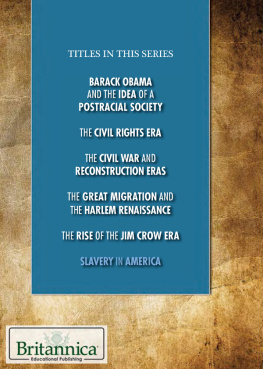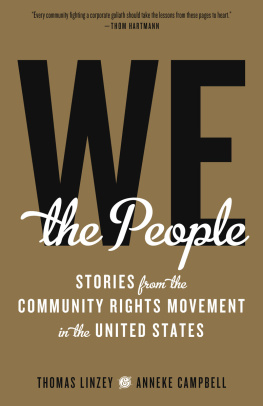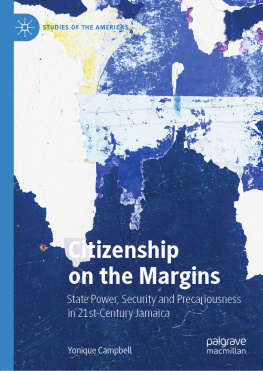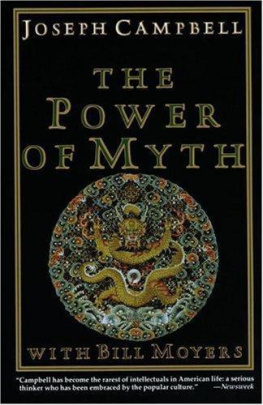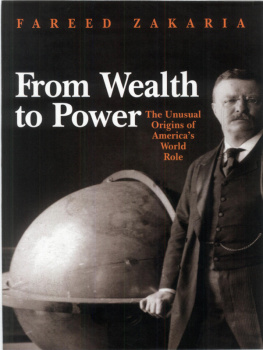2021 by the University Press of Kansas
All rights reserved
Published by the University Press of Kansas (Lawrence, Kansas 66045 ), which was organized by the Kansas Board of Regents and is operated and funded by Emporia State University, Fort Hays State University, Kansas State University, Pittsburg State University, the University of Kansas, and Wichita State University
Library of Congress Cataloging-in-Publication Data
Names: Campbell, Ballard C., 1940 author.
Title: The paradox of power : statebuilding in America, 17541920 / Ballard C. Campbell.
Description: Lawrence, Kansas : University Press of Kansas, 2021. | Includes bibliographical references and index.
Identifiers: LCCN 2021003517
ISBN 9780700632558 (cloth)
ISBN 9780700632565 (paperback)
ISBN 9780700632572 (ebook)
Subjects: LCSH: Federal governmentUnited States. | United StatesPolitics and government. | United States history.
Classification: LCC JK311 .C36 2021 | DDC 973dc23
LC record available at https://lccn.loc.gov/2021003517.
British Library Cataloguing-in-Publication Data is available.
Printed in the United States of America
10 9 8 7 6 5 4 3 2 1
The paper used in the print publication is acid free and meets the minimum requirements of the American National Standard for Permanence of Paper for Printed Library Materials Z 39.48-1992 .
CONTENTS
List of Figures and Tables
Preface
The Dynamics of American Statebuilding
PART I: COLONIAL TIMES THROUGH THE CIVIL WAR AND RECONSTRUCTION
Rise of the Little Republics
Forging a National State
Geographic and Economic Expansion
Nationalism and Public Policy
The Dynamics of Antebellum Governance
The Civil War Builds New States
PART II: THE GILDED AGE THROUGH WORLD WAR I AND THE 1920 S
Social and Economic Transformations
Nationalism, Parties, and the Coercive State, 18701917
The Federal State during the Gilded Age
The Progressive State
The Wartime State
The End of the Long Nineteenth Century
Appendix
Notes
Index
FIGURES AND TABLES
FIGURES
Figure 2.1. Map of North America, circa 1750
Figure 4.1. Map of expansion, 1820
Figure 4.2. Map of expansion, 1860
Figure 4.3. Map of railroads, 1860
Figure 8.1. Map of expansion, 1900
Figure 8.2. Map of US railroad network, 1900
Figure 9.1. Republican seats in US House of Representatives and Illinois and New York Assemblies, 1870 1928
Figure 10.1. Boston and Cleveland expenditures, 1870 1905
Figure 12.1. Federal expenditures and revenue, 1907 1928
TABLES
Table 4.1. Statehood, 1776 1861
Table 4.2. Territory, Governments, and Population, 1790 1870
Table 4.3. Economic Activity, 1800 1860
Table 5.1. Boston Governance, 1821 1863
Table 5.2. Governmental Expenditures, 1860
Table 5.3. Public Finance and Administration, 1800 1860
Table 8.1. Population of Major Cities, 1870 1920
Table 8.2. Governments in the United States, 1870 1933
Table A.1. Massachusetts Policy Innovations in the Antebellum Era
Table A.2. State Actions, 1783 1870 : California, Illinois, Massachusetts, New York, Ohio, Virginia
Table A.3. State Actions, 1870 1917 : California, Florida, Illinois, Massachusetts, New York, Ohio, Oregon, Virginia
Table A.4. Presidential Administrations and Policy Actions, 1869 1901
Table A.5. Federal Agencies, 1867 1921
Table A.6. The Documentary State: Information about Individuals, 1789 1920
Table A.7. State Actions, 1918 1929 : California, Florida, Illinois, Massachusetts, New York, Ohio, Oregon, Virginia
preface
Americas political history is a fascinating paradox. The United States was born with the admonition that government posed a threat to liberty. This apprehension became the foundation of the nations civic ideology and was embedded in its constitutional structure. Yet the history of public life in the United States records the emergence of an enormously powerful national state during the nineteenth century. By 1920 the United States was arguably the most powerful country in the world. This book traces that evolution and offers an explanation of how it occurred.
I am not the first person to see a contradiction between theory and practice in American civic life. Many eminent observers have noted this discrepancy. Yet the dynamics that account for the accretion of political power over the nations history warrant further analysis and clarification. This explanatory deficiency is partially due to the belief that there was no state in America until the twentieth century. The nations republican ideology, which pivoted around the notions of liberty and democracy, and the federal system, which fragmented power across governments and space, made it appear that the United States was stateless, at least in the European sense of the term. This book argues that the state in America is rooted in its colonial experience and evolved over subsequent decades. The first task of this book is to synthesize evidence for this contention by reviewing governance at all levels of the American politylocal, state, and nationalbetween 1754 and 1920 . I do not claim that my summary represents a comprehensive inventory of public activity, for the archive of American governmental actions is immense and largely unorganized. But I hope my synthesis offers a valid representation of the historical reality.
The second task of this book is to explain the dynamics that propelled the expansion of the American state. Answering why depends heavily on tracing how the development occurred, an assignment that argues the utility of a historical perspective. The roots of the American state were situated in its British colonial history and the Revolution, which established the base from which civic action evolved over the next century and a half. The narratives used in this book are intended to capture the situational character of a sequence of critical events that lined this historical path, one filled with crises of war, economic depression, and political confrontation. Narrative story lines cannot, however, fully illuminate the dynamics of political change. Concepts that delineate broad, sometimes amorphous megainfluences are required to tease out more subtle causal dynamics. The Paradox of Power poses five critical causal elements: war, geography, economic development, identity (including citizenship and nationalism), and political capacity. This last factor embraces law and constitutionalism, administration, and political parties. The structure of the book emphasizes the role of these orienting concepts.
The third task of this book is related to the direction of historical writing about American government. There are several parts to this story. Historians seldom used the concept of the nation-state in their writing until political scientists in the 1980 s and afterward addressed the topic, a period when civic history had begun to lose much of its former attraction for historians. Designating the state as the point of orientation can help rekindle interest in the nations civic past and fill in gaps in our understanding of it. Another part of the task facing scholars of American governance is to envision the polity in its entirety, which means integrating municipal, town, county, and state governments into the portrait of governmental history. Beginning in the 1890 s, writing about Americas political past focused increasingly on the federal government, but an exclusive focus on national history does an injustice to civic life in the United States. Major dimensions of American governance, now and in the past, are undertaken locally. This fact poses formidable challenges to researchers, given the massive number of governmental entities in the United States. There is, however, an immense literature of original documents and secondary works available to facilitate this task. My synthesis of governance during two centuries necessarily rests primarily on the work of other scholars. Mining these studies and original sources can beand probably should bean interdisciplinary enterprise, as no one discipline has a monopoly on method and theory.



